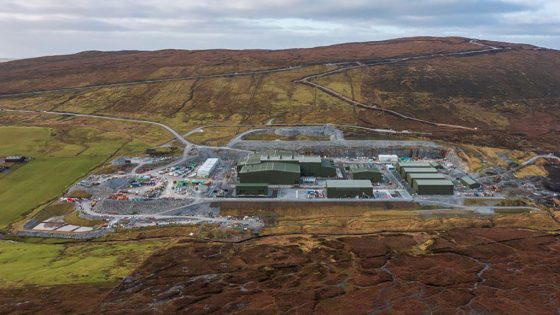Energy regulator Ofgem has approved the increased cost of building the UK’s biggest energy transmission project.
Ofgem yesterday (13 August) approved Eastern Green Link 2 (EGL2), despite the project cost rising by £1.3bn in two years after rampant inflation discouraged suppliers from bidding.
The scheme will see 436km of undersea cable laid between Peterhead in Scotland and Drax in England – the UK’s longest high-voltage direct current (HVDC) cable.
In a 2022 business case review, Ofgem wrote that the project’s capital cost would be around £2.1bn based on 2018/19 prices.
Ofgem has now approved a funding package of £3.45bn based on 2018/19 prices. This amount includes around £2.7bn on construction works and £820m on indirect costs and risk.
Justifying the cost hike in March, project developers SSEN Transmission and National Grid Energy Transmission said that suppliers were no longer happy to fix prices amid high inflation or bid for projects with an “unacceptably high-risk environment”.
In response, Ofgem revealed several bidders had withdrawn from the procurement process because they either lacked capacity to meet the project requirements or had significant new contracts elsewhere in the world. It added that the joint venture (JV) could have done more to attract and retain potential bidders.
The JV also attributed the cost rises to supply chain constraints, soaring global demand for energy network decarbonisation, commodity price inflation and a maturing project scope.
It added that the HVDC market only has a limited number of suppliers, being a specialised field with a higher barrier to entry and unpredictable demand, and that manufacturing constraints were causing high lead times for specialist equipment.
Approving the funding package, Ofgem said its previous assessment of construction costs were “obsolete to an extent” and no longer represented current contract rates, due to “innovations and changing market conditions”.
Ofgem added that the project’s supply chain “demanded” changes to the contract price after it was awarded in order to manage “costs which they have not been able to fix”, in particular the volatile prices of copper, aluminium and oil. Ofgem has not incorporated these price changes into the funding approved today, but added a mechanism to reconsider them later in the project.
The regulator also lowered the threshold for a cost and output adjustment event (COAE) from 5 to 0.75 per cent, meaning the JV can trigger discussions on further funding, target dates or output changes if project costs go £25m over the £3.4bn allowance.
A joint venture of Hitachi Energy and Bam signed a £1.6bn contract to build converter stations at each end of the cable in February, after being named preferred suppliers the previous summer.
EGL2 was approved through the Accelerated Strategic Transmission Investment (ASTI) framework. Other ASTI projects include substations in South Yorskhire and Derbyshire and new cabling from north of Hull to Nottinghamshire.
Work is expected to start on what has been dubbed the ‘electricity superhighway’ later this year and be in operation in 2029. Ofgem says the 525kV, 2GW cable will transport enough electricity to power two million homes.
Bam, Hitachi Energy and National Grid have been contacted for comment. SSEN declined to comment.

